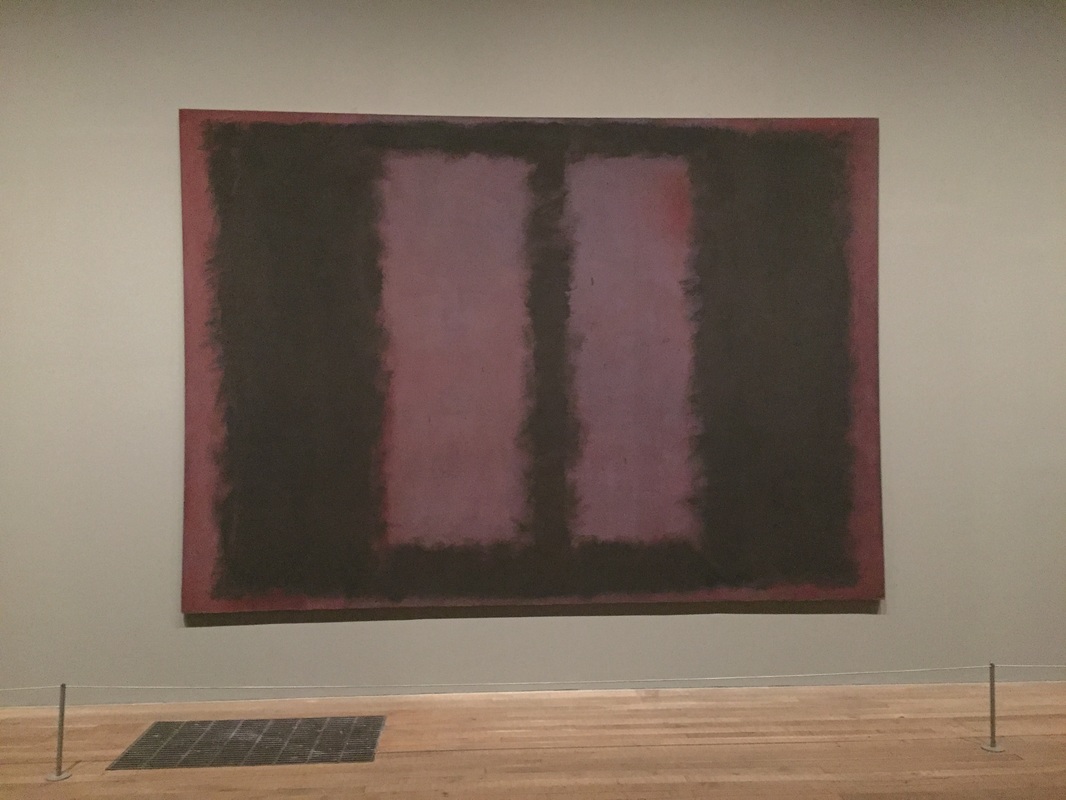What constitutes a piece of art?
Like, most of us can agree that a painting, a sculpture, a photograph, and a piece of music are all obviously forms of art. However, I, along with others, also consider performance, video games, and food to be art. So what does it mean for something to be art? Should it meet certain objective requirements, or is it all about how the viewer perceives it?
Some consider art in terms of effort, that the more skill or time that went into a painting, the more worthy of the title of "art" it is. While this is a quality present in older arts, such as the Mona Lisa or the ceiling of the Sistine Chapel, it is less obviously present in more contemporary art. Sure, There are still insanely skillful pieces of art in the modern day, such as Cao Hui's recreation of Michelangelo's David, but with its stony exterior filled with uncomfortably anatomical viscera,but art on the more abstract side, like Mark Rothko's Black on Maroon sometimes gets dismissed due to its simple composition. However, I have heard that in person, its pure size affects its interpretation, not quite beautiful, but still pleasant (loosely quoted from Jacob Geller's video essay, love this guy's stuff). Despite it's simplicity, it can evoke some sense of emotion through its rough edges and splotches.
In this sense, I do not believe that effort should determine whether something is art or not. Maybe it should affect how much people are buying it for, but not its status as art.
But should art be enjoyable? Maybe. But, a quote comes to mind: "Art should comfort the disturbed and disturb the comfortable " - Cesar Cruz. So sometimes it may be comforting, and other times it may not. I find that art can often convey emotion more clearly, unfiltered by speech. Looking at music, a classical piece like Vivaldi's Winter may move some, and for others more experimental noise music may do the trick. One example of this is Patricia Taxxon's Our Father, from her album The Flowers of Robert Mapplethorpe, ends with a disconcerting shift into a loud, percussive, breakcore-esque section that slowly grows in volume, all in seven/eight time (I think?). What I mean to say is that this change in style very rawly conveys this sense of building panic in a way I had never experienced before, and I think experiences like that are beneficial in a weird, somewhat empathetic learning sense.
So then, is it an object's ability to evoke emotion in a viewer? That's where I stand. While I think that art should have the extra qualifier of being made by people, that is more of a personal feeling that I can't really prove. Continuing on, I think that the "Art-ness" of something is that is applied by us, the viewers, in what we see in it. Art doesn't exist without the viewer. Then again, does anything exist without a viewer?
Anyway, getting back on topic, viewing art as more subjective allows for freedom in the definition of art. Plenty of things have moved me throughout my life that may not move other people in the same way, and that's okay. Not every piece of art has to move every person. But, I will continue on, like I usually do, and take interest in the small things, like this pirate ship:
Okay, I guess that it was pretty large physically, but you get my point.




Comments
Post a Comment